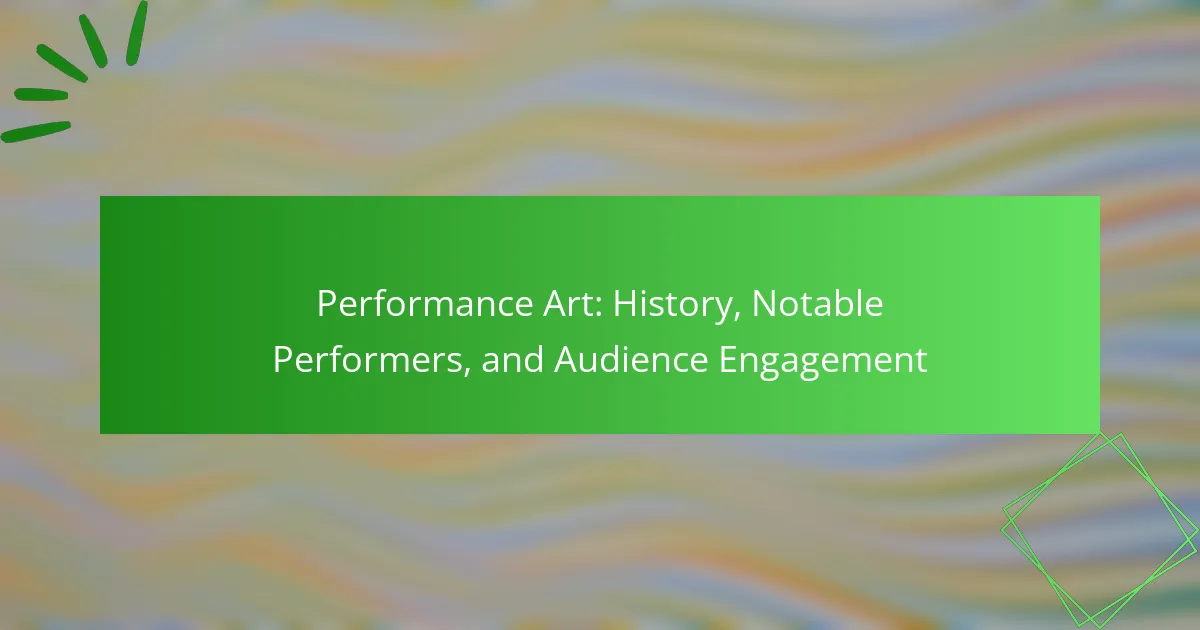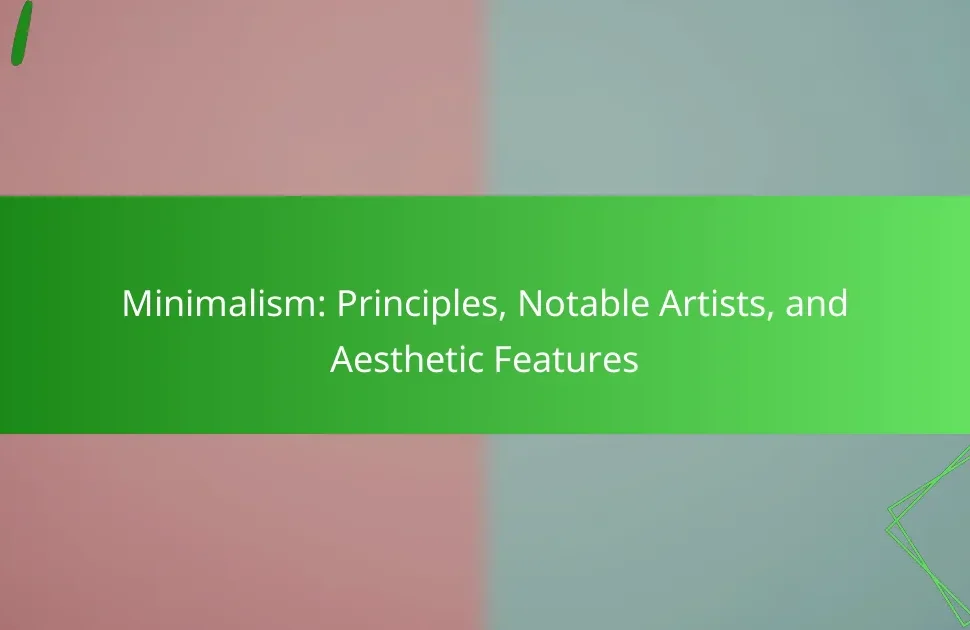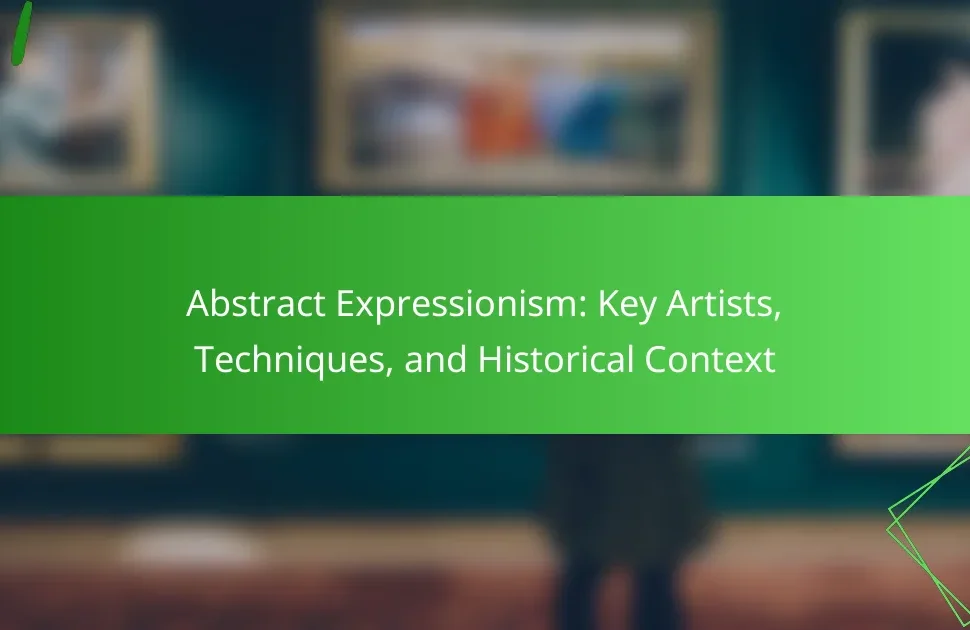Performance art engages audiences in unique ways, transforming passive observation into active participation. This article explores the history of performance art, highlights notable figures like Marina Abramović and Ai Weiwei, and examines the significance of audience interaction. Additionally, it addresses contemporary themes and challenges within the performance art landscape, including the impact of digital platforms on accessibility and engagement.
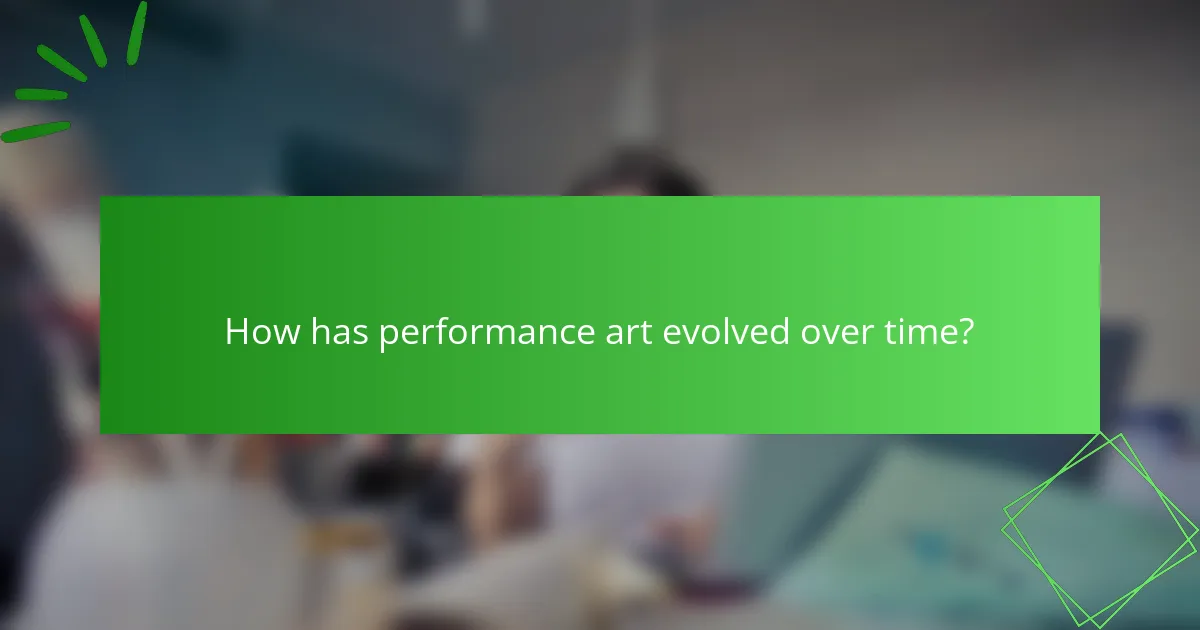
How has performance art evolved over time?
Performance art has evolved significantly, reflecting cultural shifts and technological advancements. Initially rooted in theater and visual arts, it gained prominence in the 20th century through figures like Marina Abramović and Yoko Ono. These artists engaged audiences in new ways, emphasizing interaction and experience. Over time, performance art has diversified, incorporating multimedia elements and addressing social issues, thus broadening its appeal and impact. Contemporary performance art often challenges traditional boundaries, making it a dynamic and relevant form of expression today.
What are the key movements that shaped performance art?
Key movements that shaped performance art include Dadaism, Futurism, and Fluxus. Dadaism introduced anti-art concepts, challenging traditional aesthetics during World War I. Futurism celebrated technology and modernity, influencing dynamic performances. Fluxus emphasized collaboration and the blurring of art and life, fostering audience participation. These movements collectively transformed performance art into a vital form of expression.
Which cultural influences have impacted performance art?
Cultural influences such as feminism, postmodernism, and social activism have significantly shaped performance art. Feminism introduced new themes and perspectives, empowering female artists to explore identity and gender. Postmodernism challenged traditional art forms, encouraging experimentation and the blending of disciplines. Social activism has driven artists to address political and social issues, fostering audience engagement through provocative performances. These influences reflect the evolving nature of performance art, making it a dynamic and responsive medium.
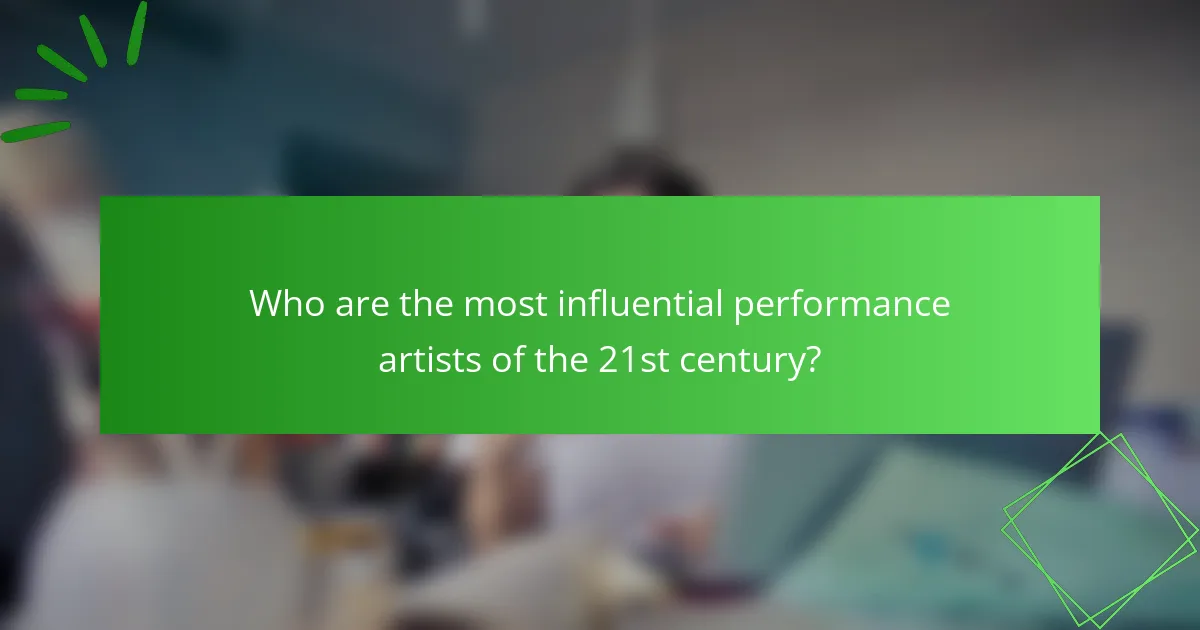
Who are the most influential performance artists of the 21st century?
The most influential performance artists of the 21st century include Marina Abramović, Ai Weiwei, and Yoko Ono. Marina Abramović is known for her endurance-based works that challenge the boundaries of the body and mind. Ai Weiwei uses performance art to address social and political issues, often incorporating activism into his pieces. Yoko Ono’s conceptual performances continue to inspire dialogue around peace and creativity. These artists have shaped contemporary performance art through their unique approaches and impactful messages.
What unique styles do notable performers bring to their work?
Notable performers in performance art bring unique styles that reflect their individual perspectives and cultural backgrounds. For instance, Marina Abramović emphasizes endurance and the relationship between performer and audience, creating immersive experiences. In contrast, Yoko Ono incorporates elements of participation and conceptual art, inviting audiences to engage actively. Each artist’s distinct approach enhances the overall landscape of performance art, showcasing diverse interpretations and emotional connections. These unique attributes contribute to the evolving nature of the medium, making it a dynamic form of expression.
How do regional differences affect the interpretation of performance art?
Regional differences significantly shape the interpretation of performance art. Cultural context influences audience perception, emotional responses, and thematic relevance. For instance, in Western cultures, performance art often emphasizes individualism, while Eastern cultures may focus on community and tradition. This divergence can affect how messages are received and understood. Additionally, local histories and social issues can inform the themes and techniques used by artists, resulting in unique expressions that resonate differently across regions. Understanding these nuances enhances appreciation and engagement with performance art globally.
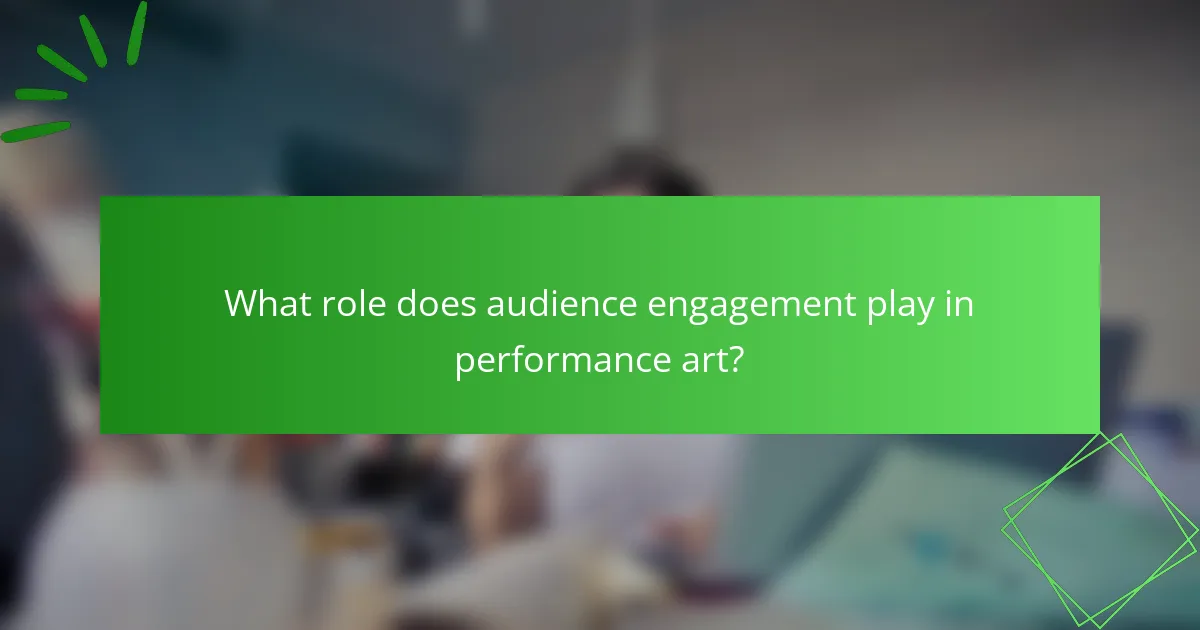
What role does audience engagement play in performance art?
Audience engagement is crucial in performance art as it transforms the experience from a passive observation to an active participation. Engaged audiences can influence the direction and emotional tone of a performance, creating a dynamic interaction between performers and viewers. This relationship enhances the impact of the art, fostering a deeper connection and understanding of the themes presented. Notable performers often utilize audience feedback to shape their work, demonstrating the unique attribute of adaptability in performance art. Engaged audiences can amplify the performance’s message, making the art form more resonant and memorable.
How do artists create immersive experiences for their audience?
Artists create immersive experiences by engaging multiple senses and breaking traditional boundaries. Performance art often incorporates visual elements, sound, and audience interaction to create a holistic experience. Notable performers like Marina Abramović use endurance and vulnerability to forge deep connections with viewers. The history of performance art reveals a shift towards participatory practices, enhancing audience engagement and emotional resonance. Through innovative techniques and unique narratives, artists transform spaces into dynamic environments that invite reflection and interaction.
What are the methods of audience interaction in performance art?
Performance art engages audiences through various interactive methods. These include direct participation, where viewers become part of the performance, and immersive experiences, which allow audiences to explore the environment. Additionally, performances may incorporate audience feedback, fostering a dialogue between artists and spectators. Technology enhances interaction through live-streaming and social media engagement, expanding reach and involvement. Unique attributes of performance art include spontaneity and unpredictability, making each interaction distinct.
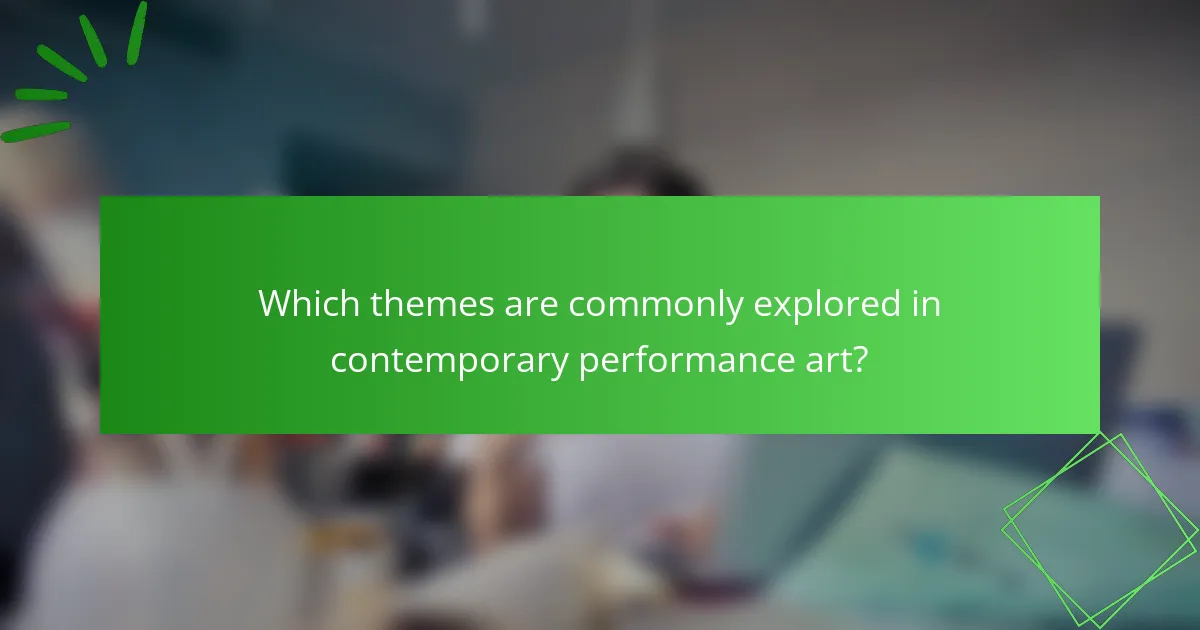
Which themes are commonly explored in contemporary performance art?
Contemporary performance art commonly explores themes of identity, social justice, and the human experience. These themes allow artists to engage with audiences on personal and societal levels, prompting reflection and dialogue. Notable performers often challenge norms, using their work to address issues like race, gender, and politics. The immersive nature of performance art fosters a unique connection between the audience and the artist, enhancing emotional impact and engagement.
How do social and political issues manifest in performance art?
Social and political issues manifest in performance art through direct commentary, symbolism, and audience interaction. Artists often use their work to challenge societal norms and provoke thought. For instance, performances can address themes like inequality, identity, and freedom. Notable performers, such as Marina Abramović and Ai Weiwei, have utilized their art to reflect political dissent and cultural critique. This engagement fosters a dialogue between the audience and the issues presented, making the experience both personal and collective.
What emotional responses do artists aim to evoke in their audience?
Artists aim to evoke a range of emotional responses, including empathy, joy, and introspection. Performance art engages audiences by creating immersive experiences that challenge perceptions and provoke thought. Notable performers like Marina Abramović and Chris Burden utilize their bodies and environments to elicit strong reactions, fostering a deep connection with viewers. This emotional engagement is often achieved through unique attributes like vulnerability, which can create a powerful impact on the audience’s feelings and reflections.
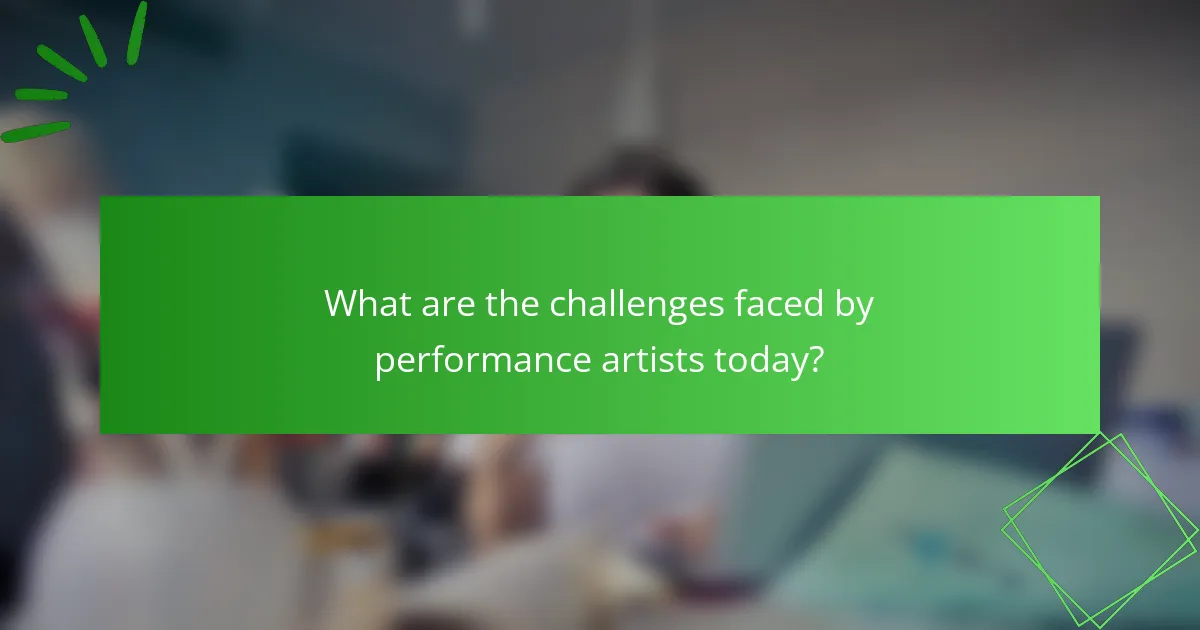
What are the challenges faced by performance artists today?
Performance artists today face numerous challenges that impact their work and visibility. These include limited funding opportunities, which restrict access to resources and venues. Additionally, the evolving digital landscape demands artists adapt their practices to engage audiences online, often requiring new skills and tools. Competition for attention is fierce, with many forms of entertainment vying for audience engagement. Furthermore, societal perceptions of performance art can lead to misunderstandings about its value and relevance. Lastly, the need for inclusivity and representation continues to be a pressing issue within the performance art community.
How does funding impact the sustainability of performance art?
Funding significantly enhances the sustainability of performance art by providing essential resources for production and outreach. Financial support allows artists to experiment with innovative concepts and reach broader audiences. It also enables the preservation of performance art traditions while fostering new talent. Inadequate funding can lead to reduced opportunities and diminished artistic quality, impacting overall audience engagement. Therefore, securing diverse funding sources is crucial for maintaining the vitality of this art form.
What are the common misconceptions about performance art?
Common misconceptions about performance art include the belief that it lacks structure, is only for elite audiences, or is solely about shock value. Many think that performance art is not accessible or that it cannot convey serious themes. In reality, performance art encompasses a wide range of styles and intentions, often engaging audiences deeply. It can address complex issues, provoke thought, and foster community interaction, making it a versatile and impactful form of expression.

How do digital platforms influence the future of performance art?
Digital platforms significantly shape the future of performance art by expanding accessibility and audience engagement. They enable artists to reach global audiences, fostering diverse interactions. Social media platforms amplify visibility, allowing real-time feedback and community building. Streaming services provide new venues for performances, enhancing distribution. Additionally, digital tools facilitate innovative expressions, merging traditional art forms with technology. This evolution encourages collaboration and experimentation, enriching the performance art landscape.
What opportunities do virtual performances create for artists?
Virtual performances create diverse opportunities for artists, including global reach, innovative engagement, and new revenue streams. Artists can connect with wider audiences beyond geographical limitations, enhancing visibility. They can experiment with interactive formats, fostering deeper audience engagement. Additionally, virtual platforms offer monetization options like ticket sales and merchandise, diversifying income sources. These opportunities empower artists to adapt and thrive in the evolving landscape of performance art.
How has social media changed audience dynamics in performance art?
Social media has significantly transformed audience dynamics in performance art by fostering greater interaction and accessibility. Audiences now engage directly with artists through platforms, creating a more participatory experience. This shift allows for real-time feedback, enabling performers to adapt their work based on audience reactions. Additionally, social media democratizes performance art, reaching wider demographics beyond traditional venues. As a result, emerging artists gain visibility, while established performers can cultivate deeper connections with their audience. This evolution emphasizes the importance of audience engagement in shaping contemporary performance art.
What best practices can enhance audience engagement in performance art?
Engaging audiences in performance art requires interactive elements, emotional resonance, and innovative marketing strategies. Incorporating audience participation can deepen connections and enhance overall experience. Utilizing social media to promote events and share behind-the-scenes content can increase interest and attendance. Collaborating with diverse artists can introduce unique perspectives, attracting a wider audience. Finally, creating immersive environments allows audiences to feel part of the performance, fostering a memorable experience.
